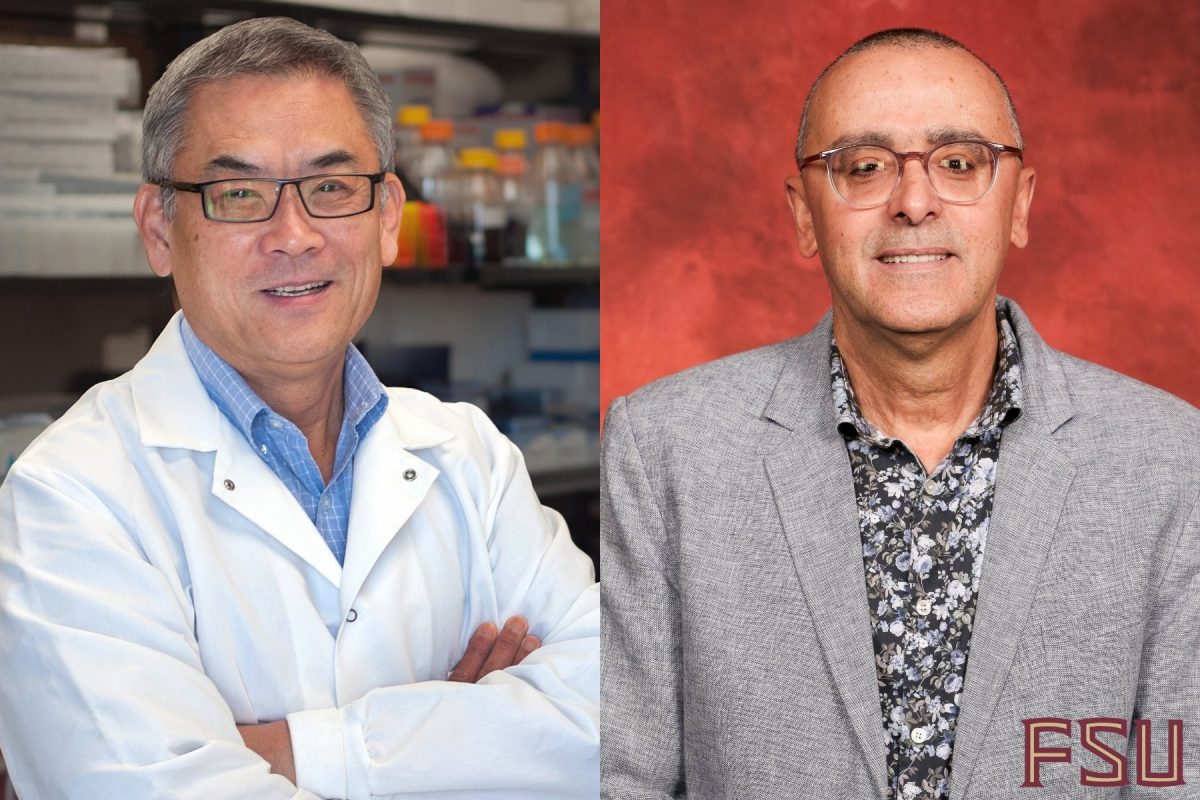
The public health crisis of drug abuse and addiction, now understood to be a chronic, treatable brain disorder, has affected society for centuries. In 2024, more than 46 million people in the U.S. had a substance use disorder, yet only 3.5% of them received treatment.
In addition to treatment options such as behavioral therapy and medication, a person’s social context has a significant influence on whether they will actively avoid drugs. Social groups such as Alcoholics Anonymous and Narcotics Anonymous provide support to those overcoming substance abuse disorders, but support outside of these groups also has a major impact.
Florida State University researchers have been awarded a $3.7 million grant from the National Institute on Drug Abuse, a division of the National Institutes of Health, to investigate the effect of peer partners on facilitating drug avoidance and reducing the desire to seek out drugs. Leading the five-year project are Mohamed Kabbaj, professor of biomedical sciences in the College of Medicine, and Zuoxin Wang, professor of psychology in the College of Arts and Sciences. They will investigate the foundational neural interactions influencing drug- and social-reward interaction.
“It’s well known that drug abuse is a serious worldwide public health problem for humans and that social affiliation and context can have profound effects on preventing and reducing drug use and dependence,” Wang said. “Unfortunately, the underlying neurochemical mechanism is still largely unknown.”
Our brains have evolved to reinforce and encourage life-sustaining behaviors through the brain’s reward pathway known as the mesolimbic system. When we experience things that give us pleasure — eating food, exercising, listening to music and other natural rewards — our brains release dopamine, an important hormone that helps us associate pleasurable activities with positive feelings.
“Because oxytocin is so important for social connections, it makes us wonder: What’s really going on in the brain that makes social interactions feel rewarding — and how does that affect whether people use or steer clear of drugs?”
– Mohamed Kabbaj, professor of biomedical sciences in the College of Medicine
When someone abuses substances like drugs, their brain reward pathway is hijacked — the neural circuitry that has evolved to enhance associative learning instead produces pleasurable feelings related to drug use, reinforcing the individual’s desire to continue using the substance.
“On the other hand, positive social interaction, such as maintaining strong social bonds, is critical and beneficial as it can have profound effects on our brain and behaviors to prevent and reduce the negative impacts on drug use from a person’s social environment,” Wang said.
Researchers will analyze a model centered on strong social preferences and focus on amphetamine or AMPH, one of the most abused drugs worldwide according to the NIH. They’ll investigate how AMPH use impairs social affiliation, how social affiliation facilitates AMPH extinction — one’s willingness to resist the drug even in its presence — and the role of the neurochemical oxytocin in mediating these drug- and social- reward interactions.
“Hanging out with a partner or friend boosts dopamine release in specific brain areas, hitting the same spots that light up when using drugs,” Kabbaj said. “AMPH tends to reduce social behaviors and bonding, but being around someone you’re close to can actually weaken the brain’s response to drugs. Because oxytocin is so important for social connections, it makes us wonder: What’s really going on in the brain that makes social interactions feel rewarding — and how does that affect whether people use or steer clear of drugs?”
The longtime collaborators will investigate the nucleus accumbens, a brain structure where dopamine is released and plays a major role in reward and motivation, and the interaction between oxytocin and dopamine at the molecular level. Oxytocin and dopamine are both neurotransmitters that facilitate communication among neurons throughout the body.
“We believe the nucleus accumbens is where oxytocin and dopamine work together to regulate this close interaction between social behaviors and drug of abuse,” Kabbaj said. “These neurotransmitters work within a brain circuit that includes the nucleus accumbens, and we plan to isolate the roles of these various brain circuits to understand the dampening effects of social behaviors on the development and extinction of drug addiction.”
Understanding the brain mechanisms behind how social behaviors impact drug addiction can lead to novel therapies including pharmacological therapy and new therapies based on how social support and social interactions influence drug use.
To learn more about research conducted in the Wang Lab, visit fla.st/BR4LINE1. For more on the Kabbaj Lab in the College of Medicine, visit fla.st/36IF0YPF.




